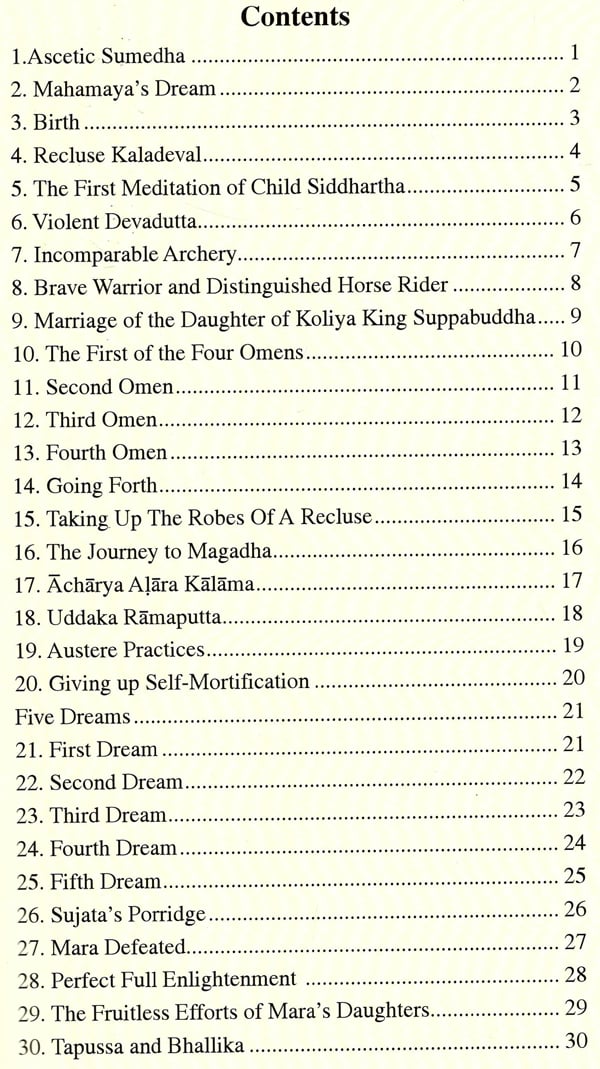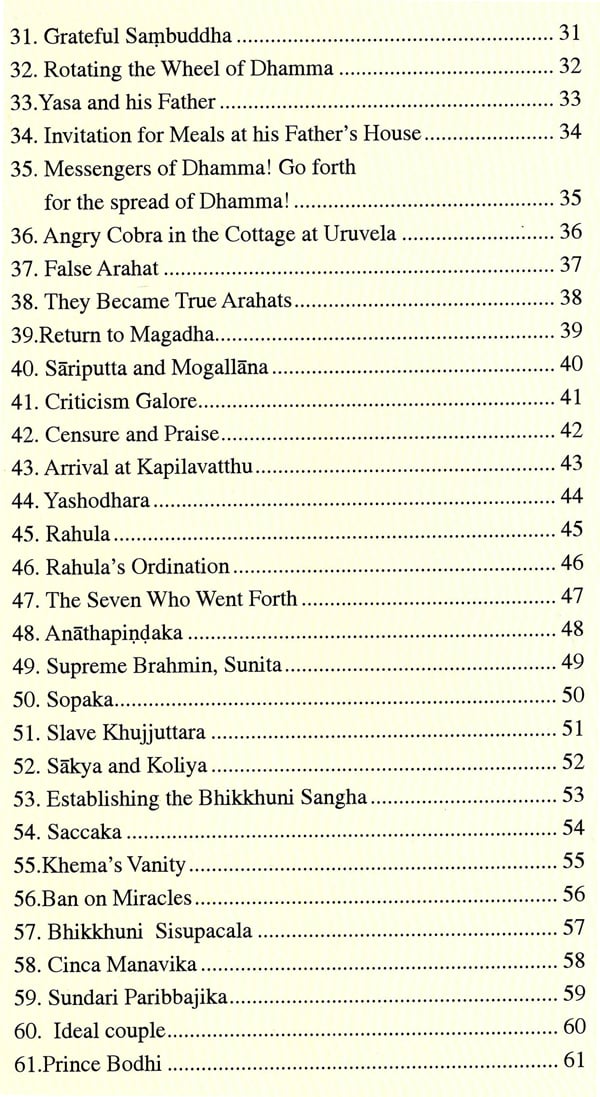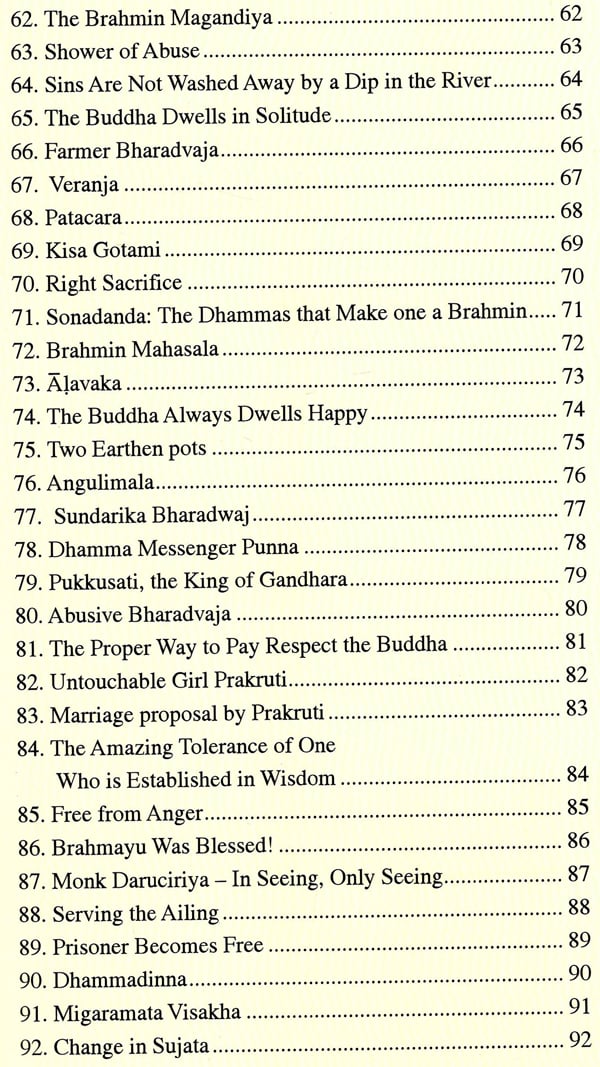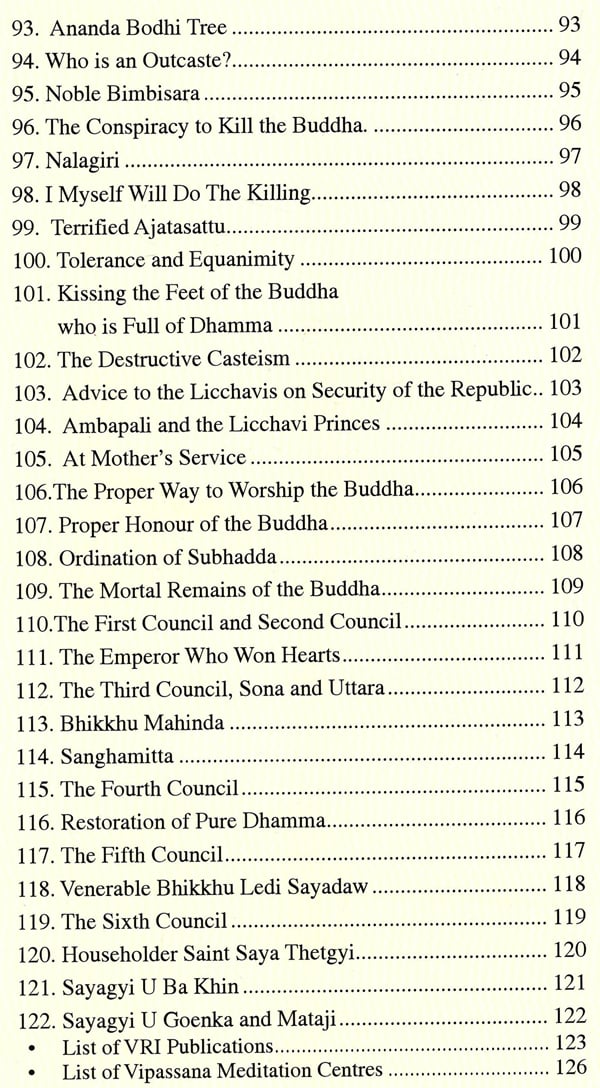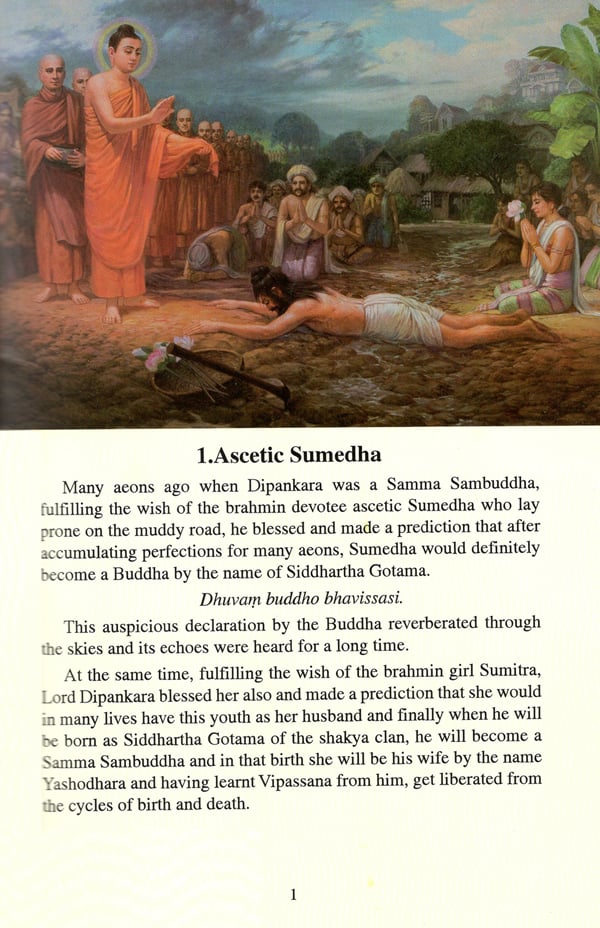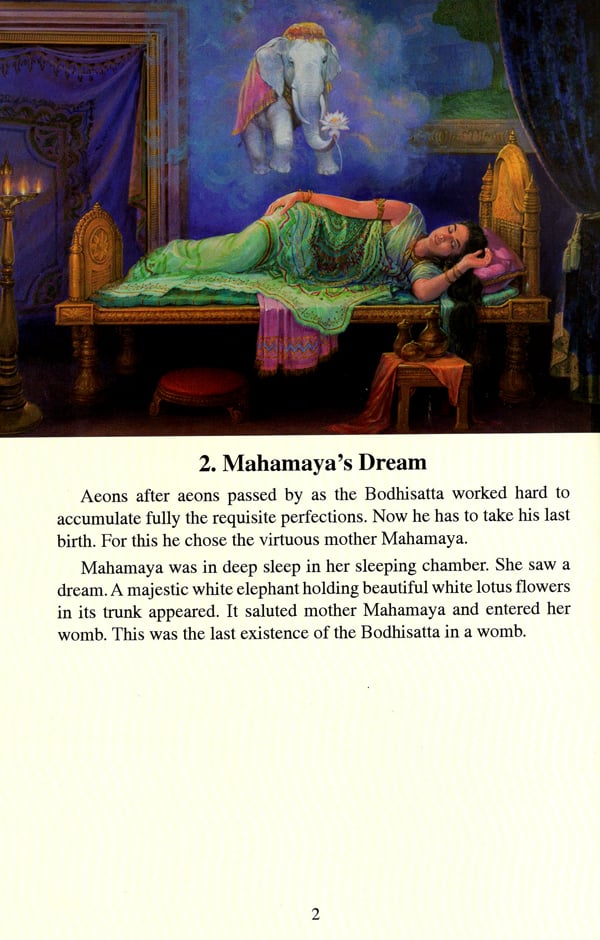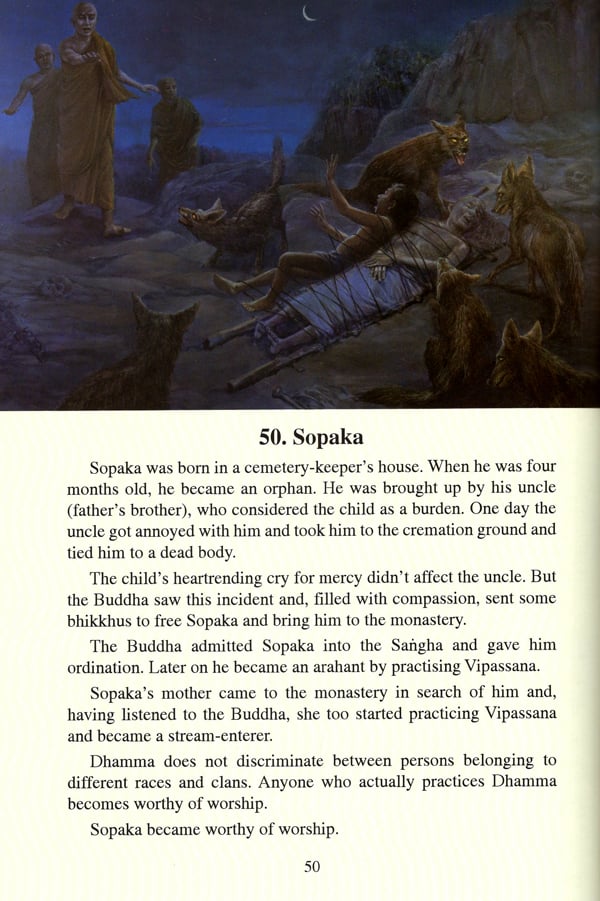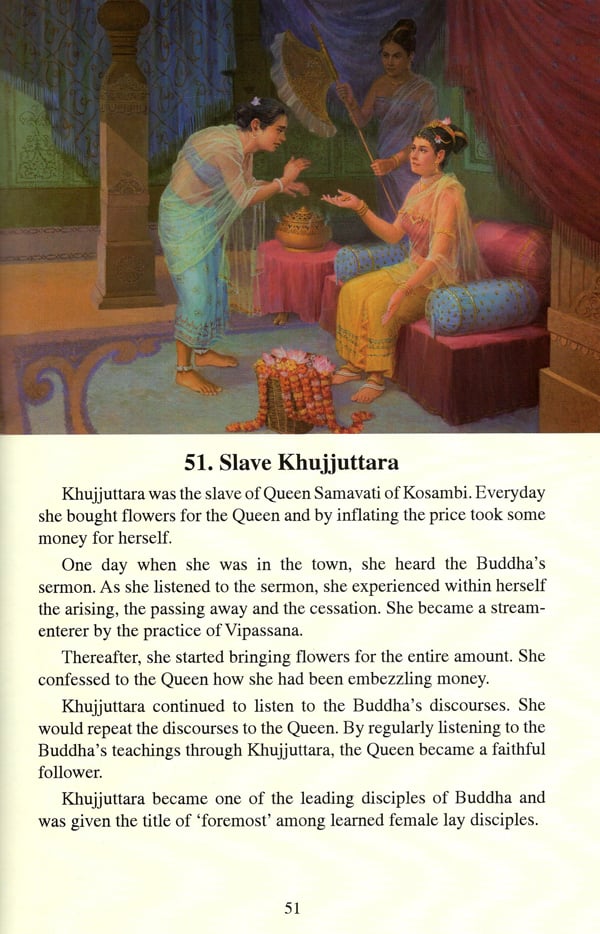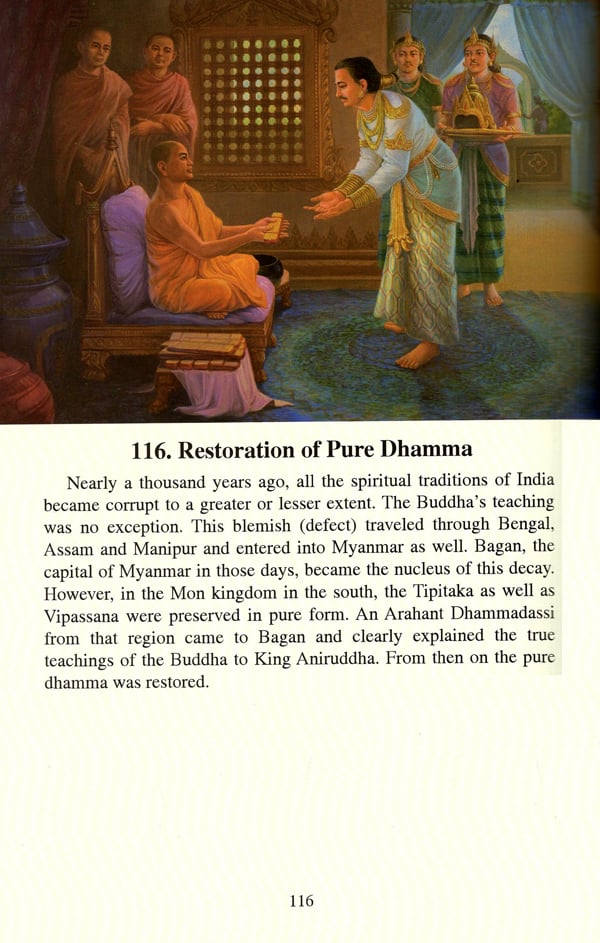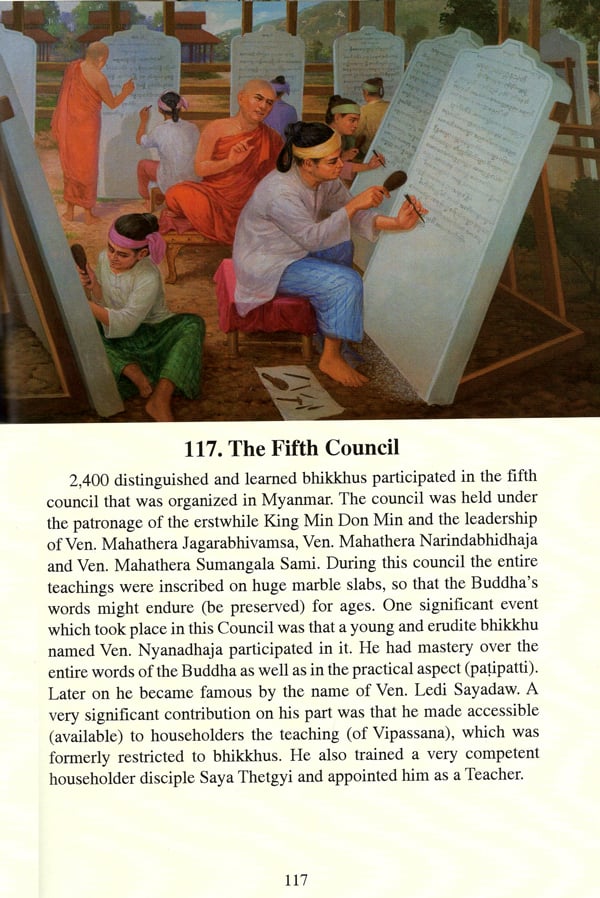
The Great Buddha's Noble Teachings- The Origin & Spread of Vipassana
Book Specification
| Item Code: | NAW230 |
| Author: | S.N. Goenka |
| Publisher: | Vipassana Research Institute |
| Language: | English |
| Edition: | 2020 |
| ISBN: | 9788174143372 |
| Pages: | 132 (Throughout Colored Illustrations) |
| Cover: | PAPERBACK |
| Other Details | 8.50 X 5.50 inch |
| Weight | 280 gm |
Book Description
This book gives only an outline of Vipassana and of the life of the great man who discovered it. A picture book containing the photographs of the beautiful paintings in the gallery at the Global Vipassana Pagoda, as well as more details of the associated stories will be published later. But even that will be also just an outline. However, it 1s hoped that this book will inspire the reader to give a trial to the practical aspect of Vipassana. There are so many other important incidents from the life of the Buddha. A vast amount of information is available about the many monks, nuns, laymen and laywomen who benefited from Vipassana during the lifetime of the Buddha and also helped many others in coming out of their suffering. If one were to make a TV serial about the life of the Buddha along with his previous lives, it would run into more than 1000 episodes.
This publication aims only at giving a brief summary of the origin and spread of the great technique of Vipassana, discovered and taught by that supreme man, the Buddha.
In India, there are many misunderstandings about the Buddha. Many believe that he is called a ‘bhagavan’ because he was an incarnation of God Almighty. The truth is that he discovered Vipassana and used it to totally rid himself of all craving, aversion and ignorance; and thus became a ‘bhagava’ or ‘bhagavan’ (literally, one who has totally destroyed one’s craving, aversion and ignorance).
After some time, his teaching started being called ‘Buddhism’ and his followers ‘Buddhists’. In reality, he only -aught Dhamma. Those who followed his teaching were salled dhammiko, dhammi, dhammacari, dhammavihari and not ‘Buddhists’. Buddhism and Buddhists are associated with a sect. The Buddha never formed a sect. He was against sectarianism. The word for Buddhism bauddha is not found in any text until centuries after the Buddha. In Pali there is no parallel word to bauddha.
There are so many other misconceptions about the Buddha which need to be removed in order to bring the reality to light. Otherwise, one would remain confused and not understand the truth. This publication will not remove all misconceptions, but should certainly help in removing some.
Come, understand what Siddhattha Gotama discovered to become the Perfectly Self-Enlightened Buddha. He had already perfected the eight meditative absorptions but had not become liberated with their practice.The eight absorptions belong to this mundane world. The devas and brahmas of the material and immaterial realms also belong to the mundane world. This entire field is impermanent, ephemeral, and transient. Vibrations arise and pass away every moment. Therefore, even after the eight absorption meditations, one cannot be said to be liberated from the cycle of life and death. Only those who go beyond these absorptions and attain the deathless, the permanent, the eternal, can be said to be truly liberated. The technique that the Buddha discovered is called Vipassana. If someone learns this technique from others and gets liberated he is not called a samma sambuddha. Only one who by the dint of his own efforts discovers Vipassana, at a time when the technique is totally lost to the world, can be called a samma sambuddha.
Many aeons ago, the ascetic brahmin Sumedha saw that Dipankara Buddha was walking towards a village and there was a yard or two of road that was still muddy. Sumedha quickly lay down prone so that the Buddha would step on his back and would not have to walk on mud.
Dipankara Buddha saw the mental state of the young ascetic and realized that Sumedha had accumulated enough merits of the past to become an arahat then and there if he were taught Vipassana. But the Buddha also saw that he did not wish for himself alone to become an arahat but rather wished to take the vow to become a sammda sambuddha and help many in their liberation.
Dipankara Buddha saw that he was ready to strive and accumulate the necessary merits to become a samma sambuddha . So the Buddha made a prediction that he would definitely become a samma sambuddha by the name of Siddhattha Gotama.
Someone becomes a samma sambuddha_ only when Vipassana is totally lost in the world; he becomes samma sambuddha because he discovers Vipassana.
It is significant that when ascetic prince Siddhattha discovered Vipassana he said, pubbe ananusuttesu dhammesu cakkhum udapadi, Adnum udapaddi, panna udapadi, vijja udapadi, aloko udapGdi... that is, the truth he had never heard manifested itself.
Even in those days many people did observe morality. Some of them did practice concentration meditations using various objects, but it was not Right Concentration. Ascetic Siddhattha (Siddhartha) practiced Right Concentration; Right (sammd) because it leads to Wisdom (panna). It was not received wisdom (acquired by hearing or reading) or wisdom. One plays verbal games or intellectual games with these. This doesn’t help one in experiencing true wisdom. Such a person cannot be said to be established in wisdom. He or she is not liberated from the cycle of life and death. Such a person may kill and indulge in falsehood and deception, and as a result goes to lower realms.
For true liberation, one must practice wisdom born of one’s own experience. This experiential wisdom destroys and eradicates mental defilements at the root level.
Vipassana originates from Morality, Right Concentration and Right Wisdom, that is, experiential wisdom. The practice of Vipassana made ascetic Siddhattha truly liberated and because he discovered the technique, he was called a samma sambuddha. This Vipassana originated at a time when it was totally lost to the world. Many people benefited from Vipassana during the lifetime of the Buddha.
After that Vipassana spread widely in India until the time of Emperor Asoka. However, about 100 years after the time of Asoka it declined and slowly disappeared from India. It went to neighbouring countries but even there small and large corruptions crept in. Only in Myanmar (Burma) was the technique kept in its purity. This became possible because Asoka sent Sona and Uttara to Myanmar with both the words of the Buddha and practical technique of Vipassana. The technique reached South Myanmar, which was called Svarnabhumi, the Golden Land, 2200 years ago and, since then, was maintained by the monks through a chain of teachers.
About 100 years ago, the wise scholar monk Ledi Sayadaw learned the technique of Vipassana. He explained and taught Vipassana to people on the basis of the words of the Buddha. He also envisioned that at the end of the First Sasana, that is 2500 years after the passing away of the Buddha, the technique would go to India and would spread to the rest of the world from there. If it were to spread to the rest of the world, it could not be limited to the monks. Therefore, he taught it to householders. At the time of the Buddha, not only monks and nuns but also laymen and laywomen practiced Vipassana and many of them became teachers of Vipassana. However, over time, the tradition of lay teachers of Vipassana was lost. Ledi Sayadaw reestablished that tradition and appointed Saya Thetgyi as a teacher of Vipassana. Later Sayagyi U Ba Khin became an illustrious lay teacher of Vipassana. This resulted in the worldwide spread of Vipassana.
